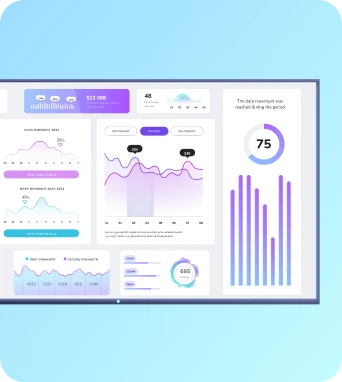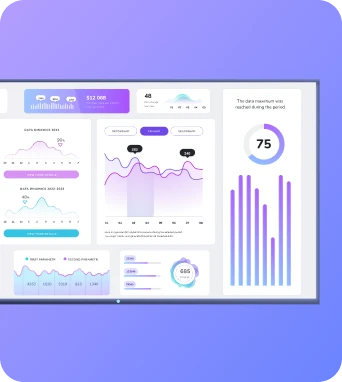Amazon finally targets digital signage with the new Signage Stick
Amazon has been flirting with digital signage for years now - mostly unintentionally - with its Fire TV Stick occasionally co-opted by small businesses for signage, despite it never being meant for that purpose.
Now, Amazon has taken a much more deliberate step into the market with the release of the Amazon Signage Stick. While it's not quite a high-end, hardened solution like something from BrightSign or SpinetiX, it’s clear Amazon sees a real opportunity in catering to SMBs and use cases that don’t require enterprise-grade hardware.
What is the Amazon Signage Stick?
At first glance, the Amazon Signage Stick looks a lot like a Fire TV Stick, and that’s no coincidence. It's the same general form factor: small, easily concealable behind a display, and designed to connect via HDMI.

But this isn’t simply a repackaged streaming device; Amazon has actually listened to feedback from the digital signage community and built a version that solves some of the most glaring problems those users had when trying to shoehorn Fire TV Sticks into their networks.
The device is built to run digital signage software from the get-go. There’s no consumer-facing bloatware to strip away, no need to jailbreak or modify. This is a pure signage solution right out of the box.
That’s a huge step forward for Amazon, and it's an indication of their ambition to cater to the digital signage industry in a more meaningful way than they ever have before.
How does it differ from the Fire TV Stick?
While the Fire TV Stick has been used as a digital signage player in some DIY setups, it was never really intended for that space, and the cracks showed quickly.
Users complained about limitations in running CMS software, the lack of kiosk mode, and the difficulty of remote management - things that are essential in a professional signage environment.

The Signage Stick tackles these issues head-on. It comes with a secure boot loader to ensure only trusted software runs on the device. It also supports kiosk mode natively, which means it can boot straight into your CMS application and start displaying content without any manual interaction. This is something signage professionals have been asking for, and Amazon’s finally delivered it.
The hardware is also a step up. The quad-core SoC ensures smooth playback of up to 4K content, and with WiFi 6E, you’re looking at faster and more reliable network performance - a big win for bandwidth-heavy setups in environments with high wireless traffic.
Amazon’s move into digital signage is a big deal for the industry
Amazon jumping into digital signage with a dedicated product is a signal that the digital signage industry has reached a point where even the largest tech giants see growth potential.
While the big names in signage like BrightSign have been around for years, it’s telling when a company with the resources & influence of Amazon takes a step into this space.
They could have easily continued to ignore the signage market, allowing Fire TV Sticks to be used inappropriately by budget-conscious SMBs, but this shows a different mindset. Instead of discouraging the use of their devices in signage, they’ve doubled down, built something better, and entered the game properly. It’s a great indication of the growing importance of digital signage in retail, hospitality, and beyond.
Specs & features
From a specs perspective, the Amazon Signage Stick isn’t breaking any records, but it doesn’t need to. What it does offer is more than enough for the many use cases that SMBs are going to encounter. It features:
- Quad-core SoC for smooth 4K video streaming and playback
- WiFi 6E for high-speed, stable connectivity
- Data encryption and a secure bootloader for heightened security
- Pre-configured to work seamlessly with CMS platforms
- Native kiosk mode support
The lack of bloatware is another big selling point. Amazon’s stripped away the clutter and kept the device lean, ensuring that all the resources are dedicated to doing what it’s supposed to, which is running signage content efficiently & reliably.
Who’s the Amazon Signage Stick for?
Amazon clearly has SMBs in mind with this device. For businesses that don’t need the complexity (or cost) of enterprise-grade digital signage players and management systems, the Signage Stick is a smart choice.
Think small retailers, hospitality venues, and local service providers - anyone who needs to get up and running with digital signage without having to navigate the steep learning curve that comes with higher-end hardware solutions.

It’s not a replacement for more robust solutions, but for the businesses it’s targeting, it’s more than enough. The built-in CMS compatibility, easy setup, and relatively low price make it an appealing option for budget-conscious companies that want professional signage without professional-grade headaches.
Setting it up
Amazon has made the setup process straightforward. If you’ve ever set up a Fire TV Stick, the Signage Stick will feel familiar. All you need is an Amazon account, a WiFi connection, and a subscription to a compatible digital signage CMS.
Currently, the Signage Stick comes pre-loaded with a handful of CMS platforms, but you can expect Fugo to be added as a partner CMS in the near future.
When our integration goes live, we anticipate that it’s going to unlock even more possibilities for businesses using the Signage Stick. Our focus on flexibility and ease-of-use will bring a new level of control and simplicity to our small business customers managing their screens.
Final thoughts
The Amazon Signage Stick is an interesting development for the industry. While it’s not a game-changer in terms of innovation, it’s a smart, well-considered response to a very real market demand. It gives SMBs an affordable, functional option without requiring the expertise or investment that some other signage solutions do.
Most importantly, it shows that Amazon is paying attention. If this device gains traction, we could easily see more Fire-based signage solutions hitting the market in the future. The industry as a whole is growing, and Amazon’s involvement is only going to accelerate that.
Amazon Signage Stick FAQ: Features, differences, and how to use it for digital signage
- What is the Amazon Signage Stick?
The Amazon Signage Stick is a media player built specifically for digital signage, offering more robust performance and commercial features than the standard Fire TV Stick. - How is the Amazon Signage Stick different from a Fire TV Stick?
Unlike the consumer-grade Fire TV Stick, the Signage Stick is optimized for 24/7 playback, remote device management, and commercial use in digital signage deployments. - Can I use the Amazon Signage Stick with Fugo?
Not yet! We anticipate Fugo being added as an Amazon Signage partner app, available on on the Stick, later in 2025. - Is the Amazon Signage Stick a good choice for small business signage?
Yes, it's an affordable and purpose-built option for small businesses that need reliable signage without the complexity of full PC-based players. - Does the Amazon Signage Stick support offline playback?
Yes, it includes support for offline playback through compatible signage software, allowing preloaded content to run even during network interruptions. - Can I manage multiple Amazon Signage Sticks remotely?
Yes, digital signage platforms like Fugo allow you to manage large fleets of devices, update content remotely, monitor playback status, and troubleshoot from a central dashboard. - What kind of content can I display using the Amazon Signage Stick?
You can display a wide variety of content including videos, images, dashboards, data feeds, and web content when using a supported CMS. - Is the Amazon Signage Stick suitable for enterprise environments?
Not really. While it can be managed remotely with a digital signage software and is fine for smaller deployments, it lacks the durability, memory, and enterprise-grade features needed for high-scale, 24/7 environments. Devices like the Fugo NUC or BrightSign players are better suited for that use case.





